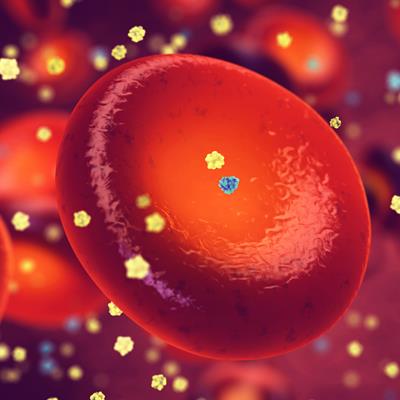February 10, 2023 -- Scientists at the NIH’s National Human Genome Research Institute (NHGRI) have found a set of small RNA molecules, called microRNAs, in human pancreatic cells that are strongly associated with type 2 diabetes.
The results of the large-scale genetic analysis, published February 9 in the Proceedings of the National Academy of the Sciences, will inform future studies on the early detection and treatment of diabetes.
Diabetes affects more than 37 million people in the U.S. -- about 1 in 10 people. Over 90% of people with the condition have type 2 diabetes, in which groups of cells called pancreatic islets fail to produce sufficient insulin to control blood sugar, and/or are unable to use insulin properly.
The prolonged high blood sugar levels resulting from diabetes can lead to heart disease, kidney disease, and vision loss. While treatment and lifestyle changes can help manage the condition, diabetes currently has no cure.
MicroRNAs are found within the pancreatic islets. Previous research with animal or cell-based models over the past two decades suggests that certain microRNAs, which are involved in controlling which genes are turned on and off, may help pancreatic islets develop and function normally. However, the specific role of these microRNAs in human pancreatic islets was not previously well-studied.
Using next-generation DNA sequencing, a fast and high-throughput method for sequencing nucleic acids like DNA and RNA, the researchers analyzed microRNAs in over 60 samples of human pancreatic islets. They found specific microRNAs that are different in people with type 2 diabetes -- information which may be important for charting the course of the condition or developing drug therapies.
The researchers also found genomic variants associated with the quantity or expression level of certain microRNAs. These genomic variants might explain the variation seen in the specific microRNA levels among different people. One genomic variant was found in a genomic region known to be associated with increased risk for type 2 diabetes-related traits, which may provide clues about how type 2 diabetes develops.
The researchers said the study represents the largest sequenced-based analysis of microRNA expression in human pancreatic islets to date.
"Based on this work, and building on previous studies, we hope one day to be able to identify accurate microRNA biomarkers for early detection and treatment of diabetes and improve outcomes for patients in the future," said first author Henry Taylor, University of Cambridge PhD candidate, in a statement.
Copyright © 2023 scienceboard.net










